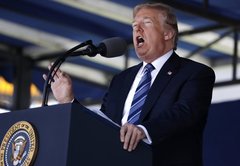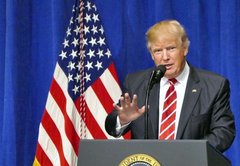Rebuild the U.S. Navy toward the goal of 350 ships
Donald Trump
"We will build a Navy of 350 surface ships and submarines as recommended by the bipartisan National Defense Panel."
Trump-O-Meter

Compromise



